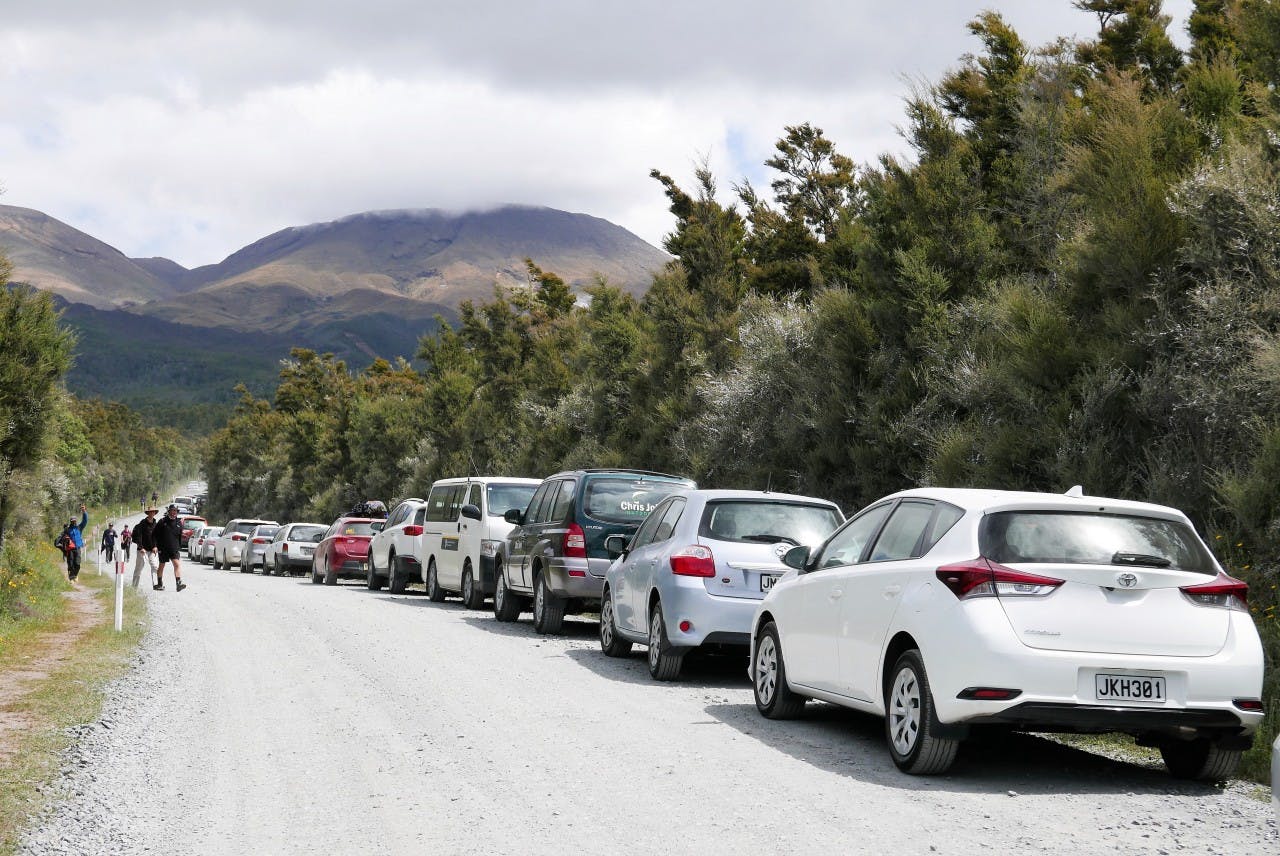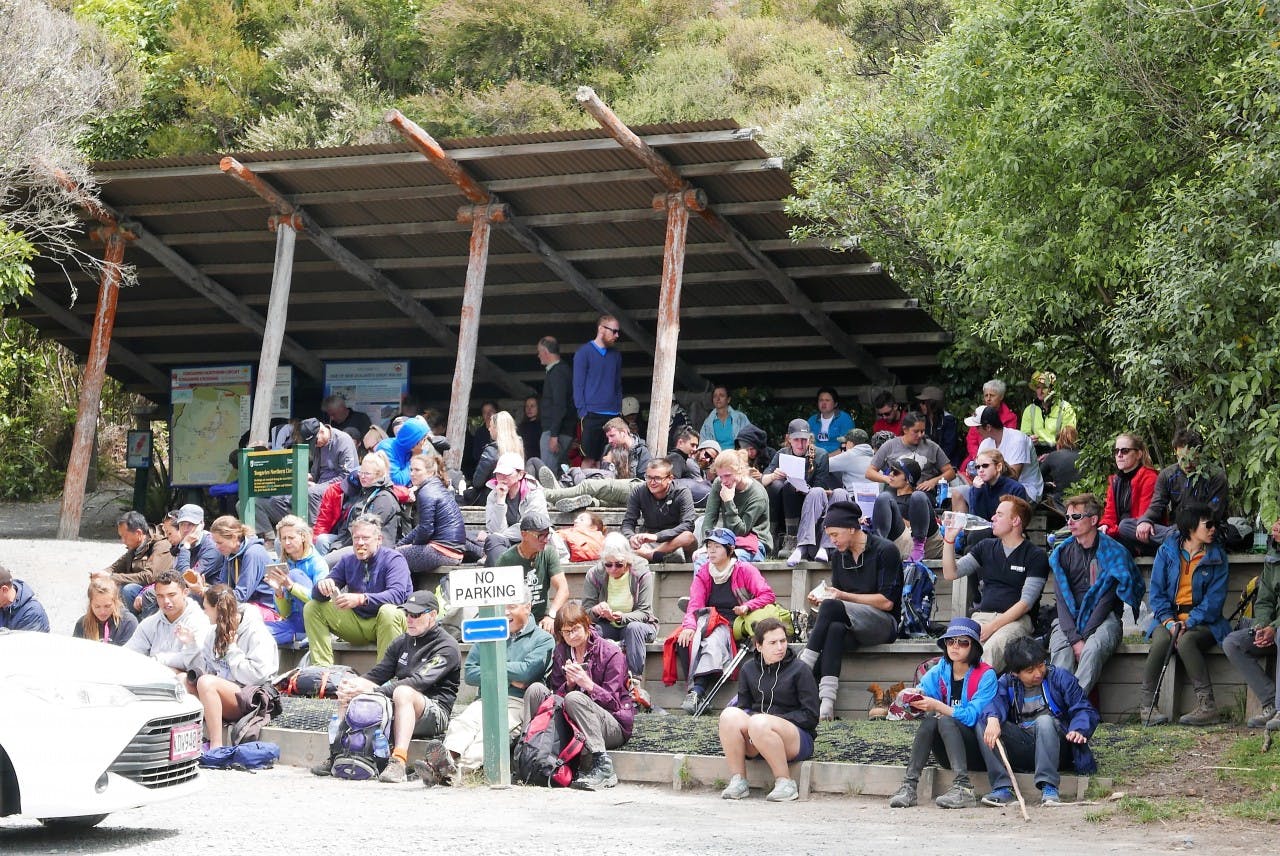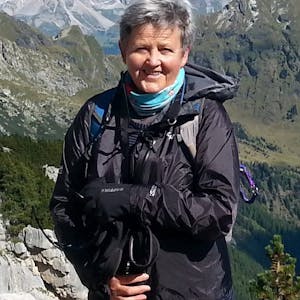Ideas for managing the busy Tongariro Alpine Crossing may pave the way for new management approaches in other high-use areas, writes Kathy Ombler
It traverses a sacred taonga, a volcanic spectacle, an apparently famous movie landscape, and is an undeniable bucket-list walk. It’s also become the pin-up poster child in the current debate raging about tourism growth in New Zealand’s national parks; the place everyone quotes when they complain of crowds, car park overflows and crapping on the track (sorry, the alliteration was too tempting and anyway, tragically, it’s true).

Ketetahi parking: Cars line the road to Ketetahi Road end. Photo: Kathy Ombler
‘Basically a conga line with a picnic at the top’ was one social media description, this January, of the Tongariro Alpine Crossing. More than 1000 walkers a day has become a regular occurrence. On the ‘peak day’ this summer, 2750 people walked the track. ‘People jams’ on the steepest, highest section are common. More toilets were added this season but there were still queues, and mess beside the track. The car parking issues have continued. New Zealanders are staying away, at peak times at least, and international visitors are starting to be heard, voicing dismay.
What to do? Last year Wilderness reported that a group comprising local iwi, DOC and guiding and transport concessionaires was close to agreement on a trial transport system for the TAC. The trial would entail developing car parks near the track’s two access roads (Mangatepopo and Ketetahi) with licenced shuttle buses transporting walkers to the track’s start and finish points and between the two car parks. The aim was to alleviate the current chaos, where private cars jam the length of both Mangatepopo and Ketetahi roads, and DOC contractors ‘manage’ the mayhem by the SH46/Ketetahi junction. It’s the kind of system that works well overseas but the trial, planned for this summer just gone, didn’t get off the ground.
Stew Barclay, a long time walking guide in Tongariro National Park, decries the delay. “It’s just awful. Cars are parked all over the roadside vegetation. People are walking for 3-4km on those dusty roads, the buses manoeuvre around them. People rush over the crossing so they don’t miss their transport then sit waiting at the road end for an hour or more. Everyone starts early to beat the crowds, so they don’t, then after about 3-4pm there’s no-one up there, yet there’s plenty of daylight.
“It is so simple to fix. Build two car parks. Close the two park roads to all but licenced shuttle bus operators. The current operators who transport walkers from local towns will still have that business. Commercial realities will sort things.”
Central government needs to put in the investment to pay for this, he adds. “Tourism is government’s number one earner, after all.”
He says it would be easier for everyone, including Kiwis who are used to driving themselves to the start of a track. “This way there’s no need to organise a car at each end; they can just get the shuttle back to where they started.”
Crowds on the track are not so easy to solve. Restricting numbers is legally problematic, with freedom of access into national parks enshrined in the legislation.
The horse has bolted, says Barclay. “We’ve promoted it to bolt. Let’s embrace what we have and put professional services in place to manage it. Because the bottom line is people still love it.”
Stagger starting times, he suggests. “People could start later and avoid the crowds. The bus shuttles could be managed to do this. I met a Kiwi family up at Emerald Lakes at 3pm one day, having a late lunch. They said they’d had a lovely walk with hardly anyone else around.
“And if people want a wilderness experience in Tongariro, there are still so many places. Let me guide them,” he says, tongue in cheek.
DOC recreation manager, Gavin Walker, agrees. “There are issues on the crossing and I don’t hide from that. However, Tongariro is such a small national park with multiple access points, there are so many places for backcountry, off-track experiences, or on-track experiences with few other people,”
In February, DOC announced a review, led by DOC and Ngāti Hikairo ki Tongariro, aimed ‘to improve the experience and manage growing visitor numbers on the Tongariro Alpine Crossing’.
By all accounts, this review will be undertaken at a higher level and be more wide-reaching than last year’s. DOC director general Lou Sanson has indicated it will consider the big questions; should there be closed access roads and mandatory park and ride, for a fee? Should there be daily maximum numbers? The answers, he suggests, could signal new approaches to the management of other, high-use conservation destinations.
No timing has been given for the review’s completion.






